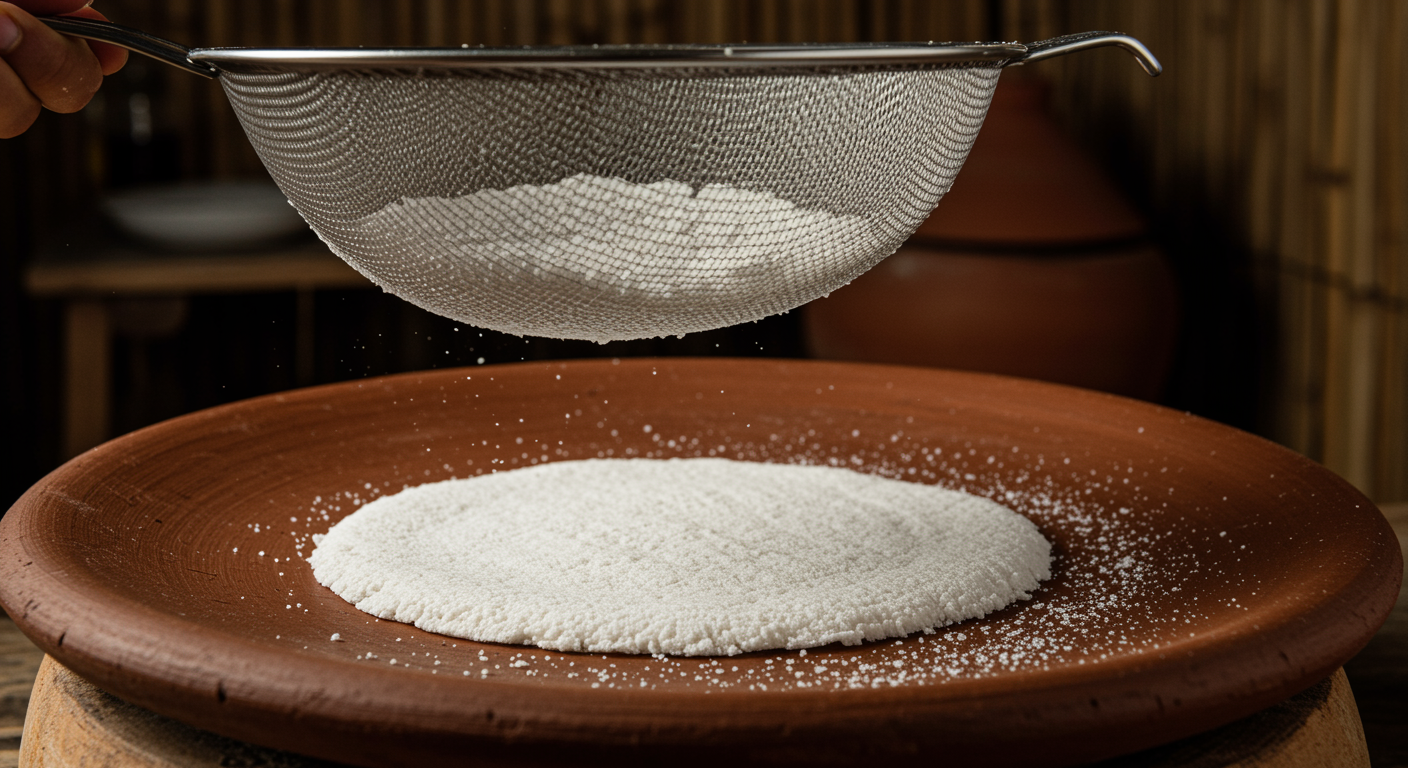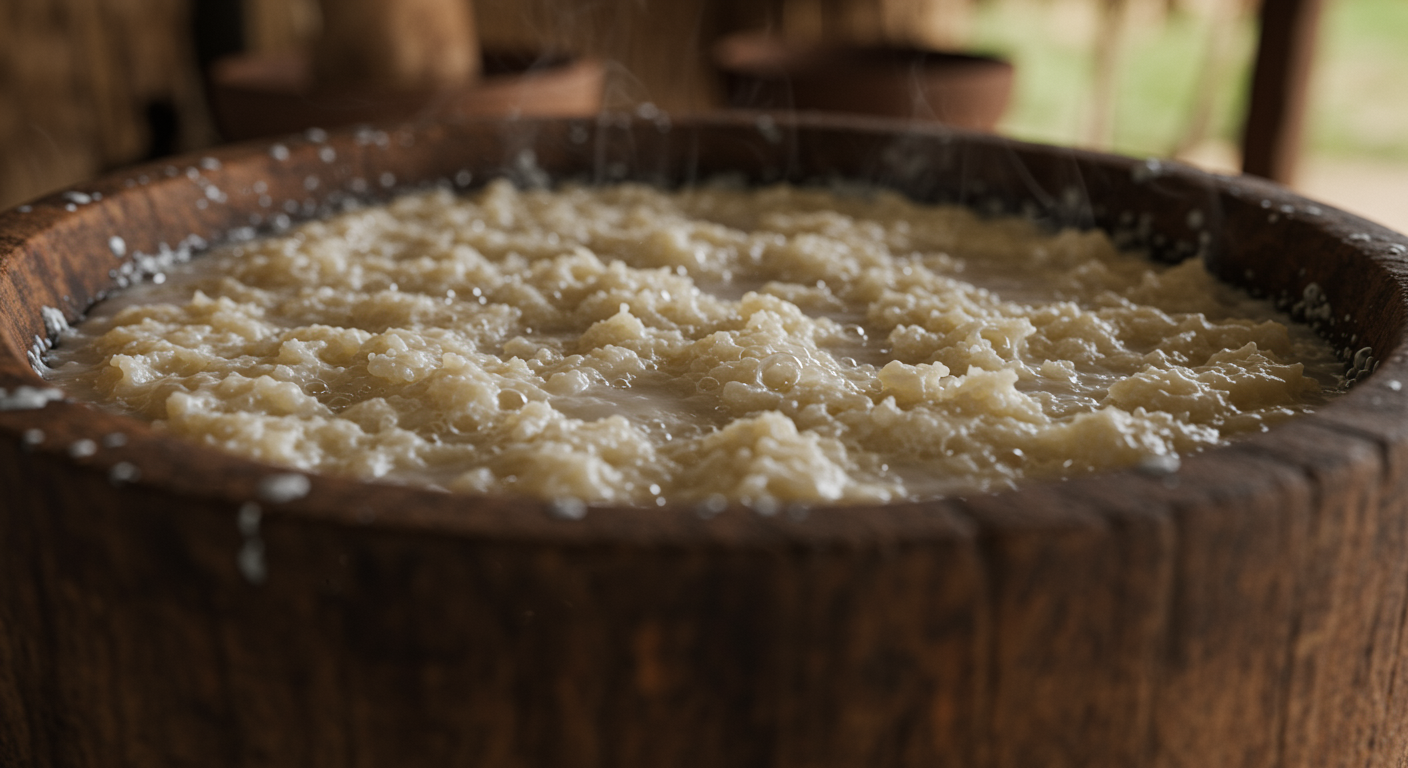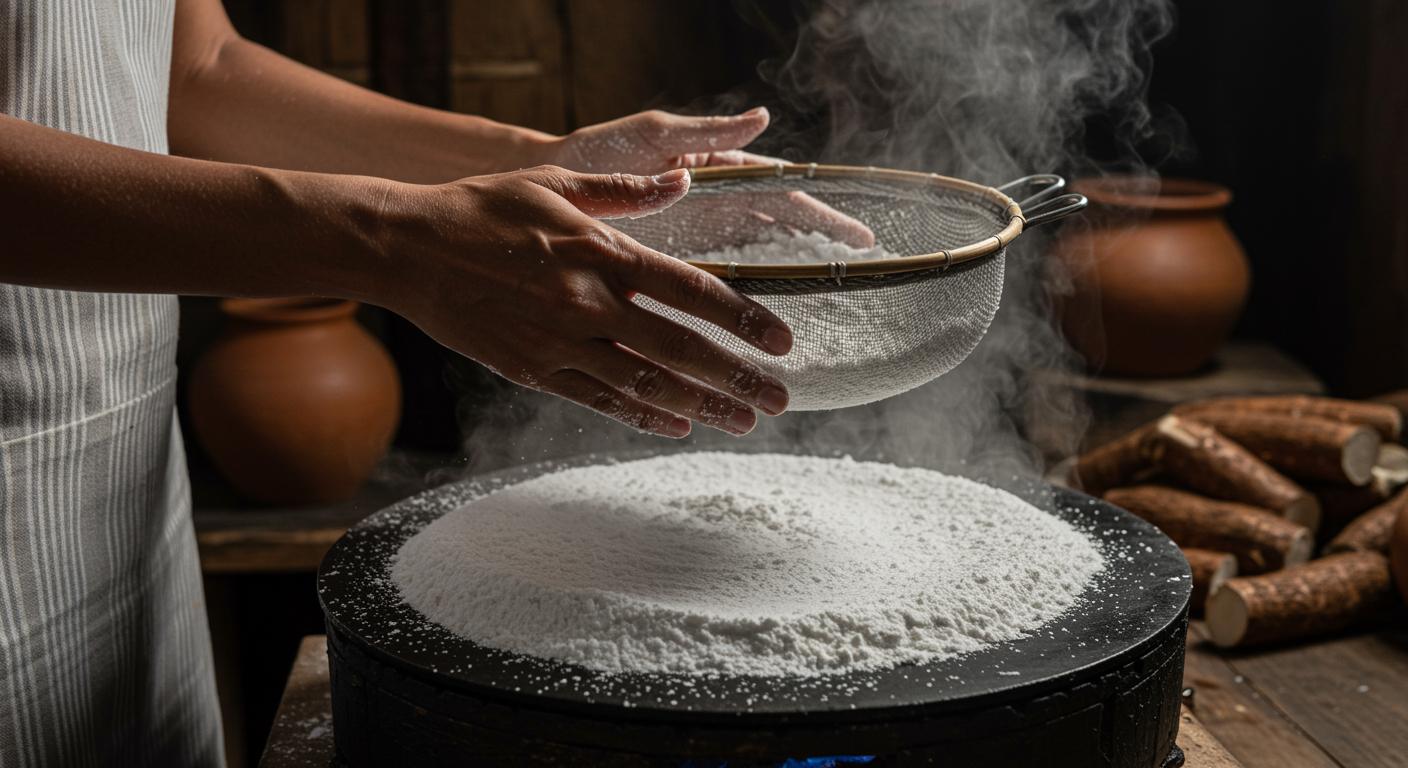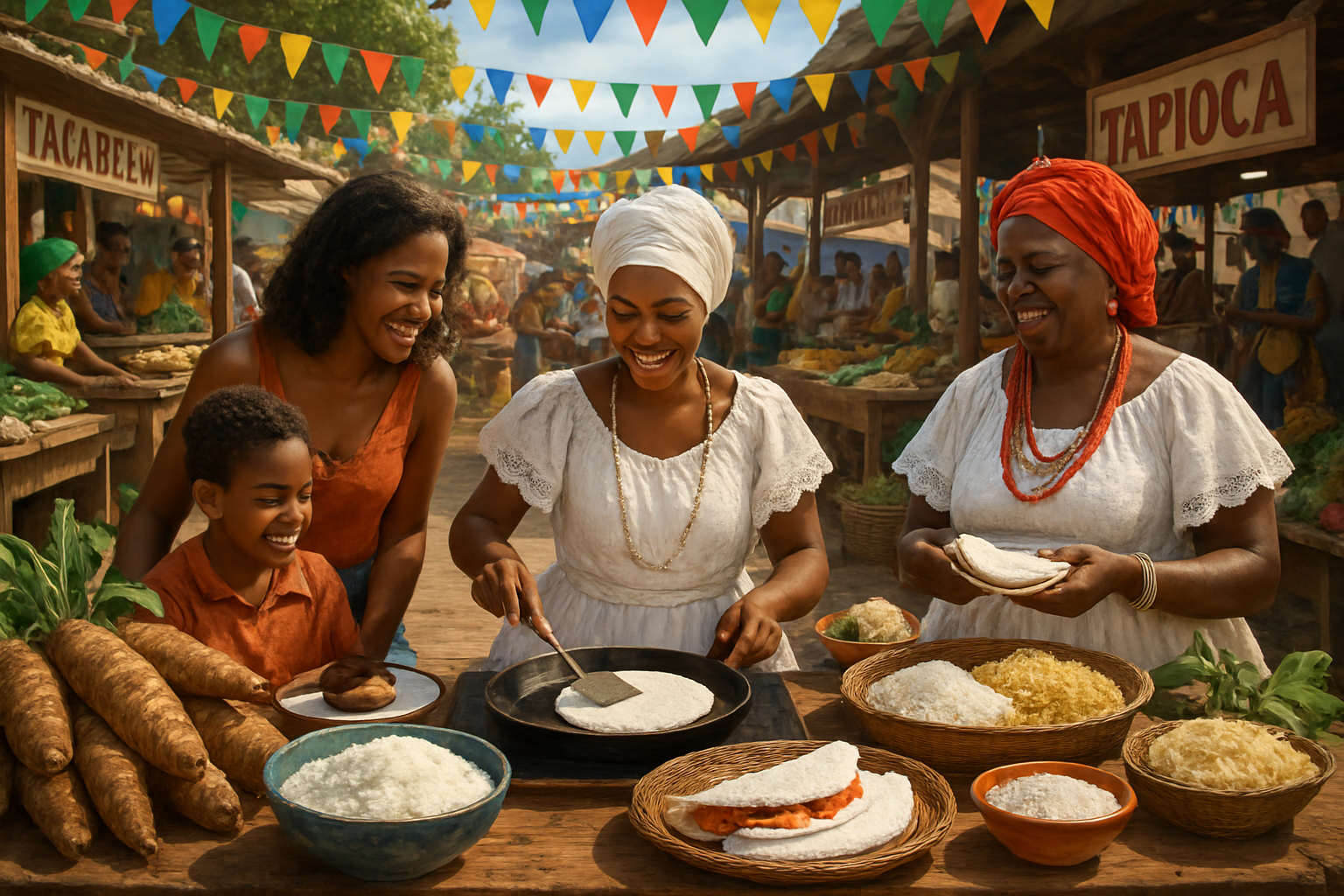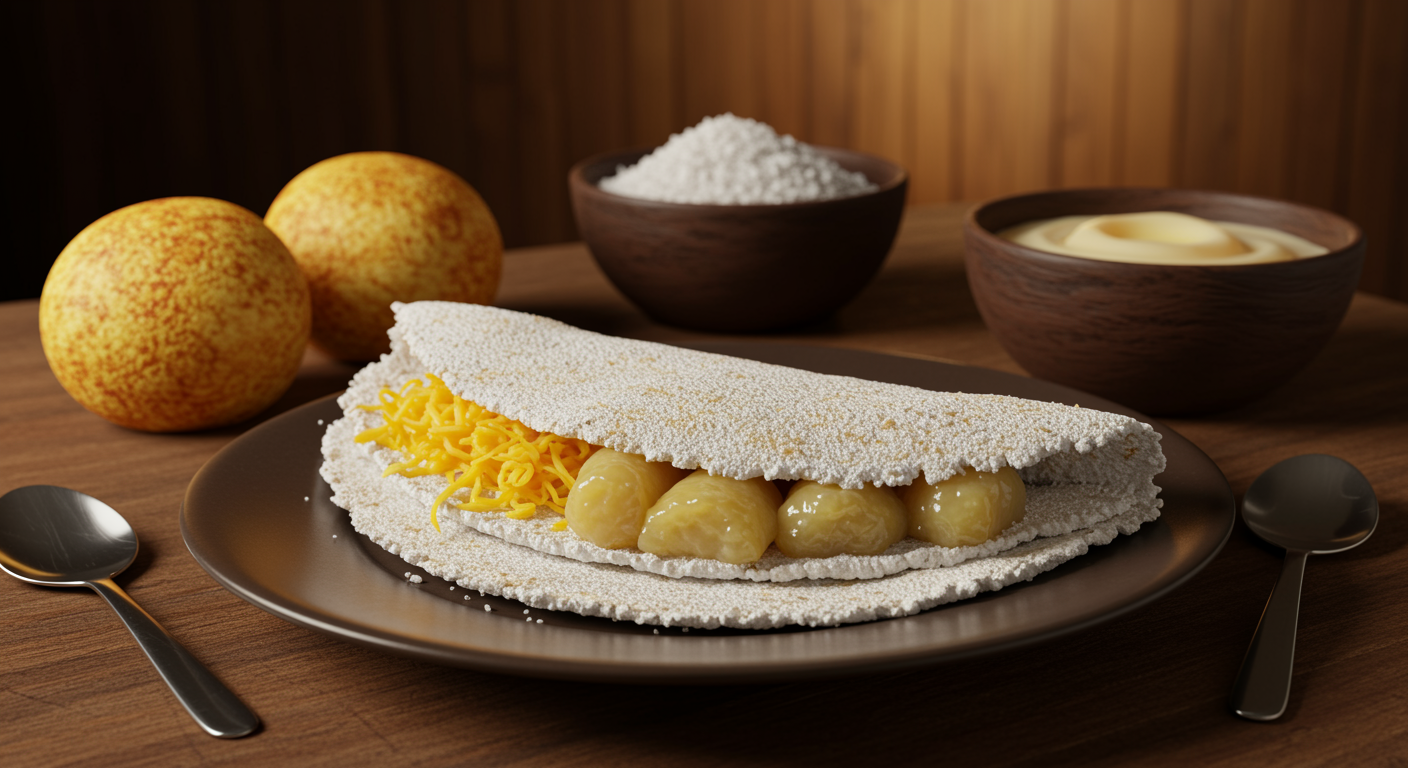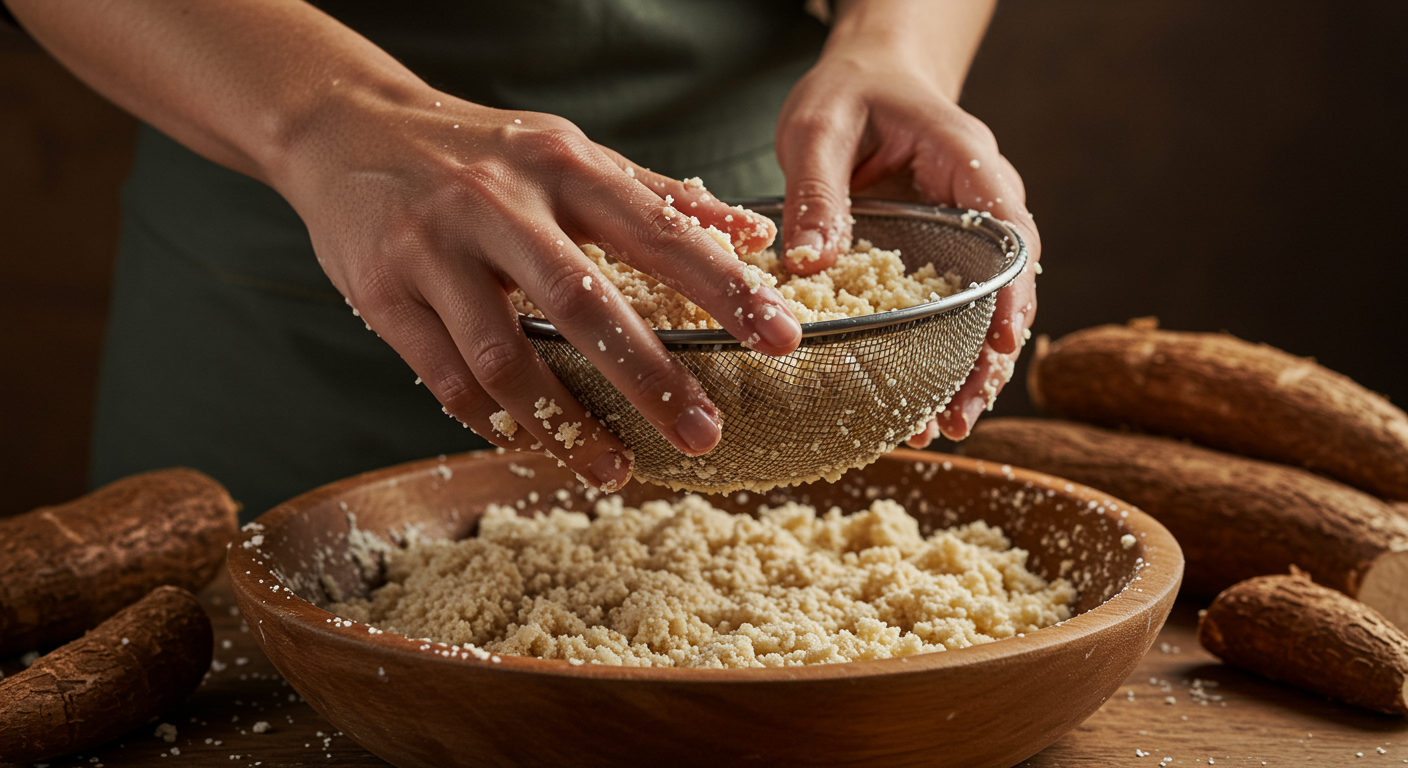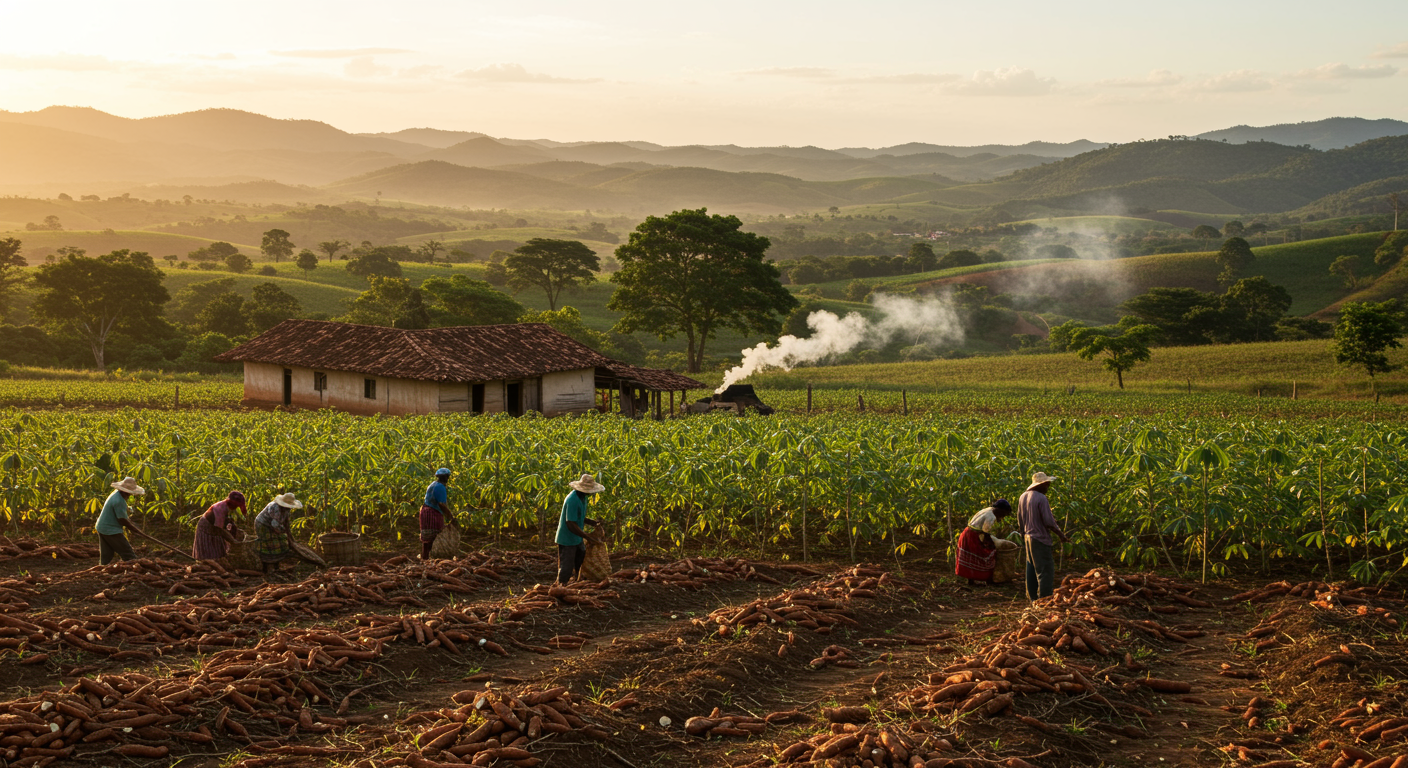The aroma of freshly prepared tapioca is a signature scent of Bahia’s interior, a culinary tradition deeply woven into the region’s cultural fabric. This simple, yet profoundly satisfying, dish owes its distinct flavor and texture not only to the quality of its cassava flour but also to the specific tools and techniques passed down through generations. To truly master the art of making tapioca like a Bahian, understanding and utilizing the right implements is paramount. These tools are more than mere kitchen gadgets; they are extensions of a culinary heritage, enabling the transformation of a humble root into a gastronomic delight. From the initial processing of the cassava to the final flourish on the serving plate, each tool plays a critical role in achieving the authentic taste and perfect consistency that defines Bahian tapioca.
This comprehensive guide will delve into the essential implements that are indispensable for any aspiring tapioca artisan. We will explore both traditional and modern tools, providing insights into their function, selection, and how they contribute to the unparalleled experience of Bahian tapioca. By equipping yourself with the knowledge of these key tools, you are not just preparing a meal; you are embracing a piece of Bahia’s rich culinary identity.
The Foundation: Cassava Processing and Goma Production Tools
Before any tapioca can be skillfully cooked on a griddle, the raw cassava root must undergo a meticulous transformation into “goma,” the fine, hydrated starch that is the heart of the dish. This initial stage is crucial, as the quality of the goma directly impacts the final product’s texture and flavor. Traditional Bahian methods emphasize a hands-on approach, utilizing tools that have been refined over centuries to extract the purest starch.
From Root to Goma: Traditional Extraction Methods
The journey begins with the cassava root, or mandioca. The first step involves peeling and washing the roots thoroughly. While this can be done with a simple knife, larger-scale operations or those seeking efficiency might use specialized peelers.
Once clean, the cassava needs to be grated. Traditionally, this was achieved using a manual grater (ralador manual), often a wooden board embedded with sharp metal teeth. This labor-intensive process yields a coarse pulp. For increased efficiency in rural households or small artisanal producers, a motorized grater might be employed, which significantly speeds up the grating process while maintaining the desired texture of the cassava pulp. The consistency of this pulp is vital; it must be fine enough to release the starch effectively but not so pulverized that it becomes a paste, which could hinder the subsequent extraction.
Following grating, the pulp is subjected to pressing to extract the liquid starch. This is where pressing tools come into play. In very traditional settings, the pulp is placed into strong cotton cloths or burlap sacks and twisted vigorously by hand or with the aid of wooden levers, squeezing out the starchy liquid. More robust systems might use a cassava press (prensa de mandioca), a mechanical device that applies significant pressure to the pulp, maximizing starch extraction. This liquid, a milky white suspension, is then collected in large buckets or basins (baldes, bacias).
The final stage of goma production involves sedimentation. The starchy liquid is left to rest for several hours, allowing the starch particles to settle at the bottom of the container. The clear water is then carefully drained off, leaving behind a moist, pure cassava starch at the base. This process, while seemingly simple, requires patience and precision to ensure the separation is complete and the resulting goma is free from impurities.
The Importance of Quality Goma and its Storage
The goma, once extracted and slightly dried, should have a fine, powdery consistency, yet remain slightly moist to the touch. This consistency is paramount for achieving a smooth, pliable tapioca when cooked. Any lumps or excessive dryness can lead to a crumbly or tough final product. Bahian artisans often judge the goma by feel, a testament to their experience and expertise.
For optimal freshness and to prevent spoilage, the goma needs proper storage. Simple, airtight storage containers are essential. These can range from large ceramic pots in traditional kitchens to modern plastic or glass containers. The goal is to keep the goma in a cool, dry place, protecting it from moisture and contaminants, ensuring it retains its delicate texture and flavor until it’s ready to be transformed into a delicious tapioca. Understanding this foundational process and the tools involved is the first step towards creating truly authentic Bahian tapioca.
Mastering the Art of Tapioca Making: Griddles and Pans
The actual cooking of tapioca is where the magic truly happens, transforming the fine goma into a soft, chewy, or crispy disc. The choice of cooking surface is not merely practical; it is integral to the final texture and taste, deeply influencing the experience of eating authentic Bahian tapioca. The griddle or pan is the stage where the starchy transformation unfolds, and selecting the right one is a craft in itself.
The Traditional “Tacho” or “Panela de Barro” (Clay Pan)
In the heart of Bahian kitchens, particularly in rural communities, the “tacho” or “panela de barro” (clay pan) reigns supreme. This traditional cooking vessel is often a wide, shallow, unglazed clay griddle, sometimes with a slightly raised edge. Its allure lies in its unique thermal properties. Clay griddles offer unparalleled heat retention and distribution. Once heated, they maintain a remarkably consistent temperature across the entire surface, which is crucial for the even cooking of tapioca. This consistent heat allows the goma to set slowly and uniformly, developing a subtle crispness on the exterior while remaining soft and moist on the inside.
The clay itself is thought to impart a unique, earthy flavor to the tapioca, a subtle nuance that seasoned palates can detect. Furthermore, cooking on a clay pan is often a slower, more deliberate process, reflecting the unhurried pace of traditional Bahian life. The thickness of the clay also prevents hotspots, ensuring that no part of the tapioca burns prematurely. For those seeking the most authentic taste and experience, a well-seasoned clay griddle is an invaluable asset, connecting the cook directly to centuries of culinary practice. Proper care, including seasoning and careful heating, ensures the longevity and performance of these cherished tools.
Modern Alternatives: Non-Stick Tapioca Pans
While the clay pan holds a special place, modern kitchens often opt for more convenient alternatives. Non-stick tapioca pans have become incredibly popular, especially for those seeking efficiency and ease of use. These pans are typically made from aluminum or cast iron, coated with a durable non-stick material.
The primary advantage of a non-stick pan is its convenience and ease of cleaning. The tapioca goma slides off effortlessly, requiring minimal oil or butter, which contributes to a healthier preparation. They also offer uniform heat distribution, though perhaps not with the same subtle thermal inertia as a clay pan. Modern pans come in various sizes and features, from single-serving pans with low edges, designed specifically for tapioca, to larger griddles that can accommodate multiple tapiocas at once. When selecting a non-stick pan, it is advisable to look for a heavy-bottomed design, as this indicates better heat retention and less likelihood of warping over time. Handles that stay cool during cooking are also a practical feature. While they may not carry the same rustic charm, high-quality non-stick pans provide an excellent, reliable surface for consistently perfect tapioca, suitable for diverse cooking styles and busy schedules.
Shaping and Flipping: Utensils for the Perfect Tapioca
The delicate process of forming and turning a tapioca on the hot griddle requires precision and the right tools. These utensils are designed to handle the delicate goma, ensuring it spreads evenly, cooks uniformly, and flips without tearing. Mastering these tools is key to achieving that signature Bahian tapioca texture—crispy on the outside, soft within.
Spreading the Goma: Sieves and Spatulas
The first step in shaping a tapioca is distributing the goma evenly on the hot cooking surface. This is where a fine-mesh sieve (peneira) becomes indispensable. The goma, even when properly stored, might have tiny clumps or varying moisture levels. Passing it through a sieve ensures that only the finest, most consistent particles land on the griddle. This creates a uniform layer that will cook evenly and develop the desired texture. Without a sieve, the tapioca can become patchy, with some areas undercooked and others overly crispy. Choosing a sieve with a comfortable handle and a wide mesh area can significantly improve efficiency and consistency.
Once the goma is sieved onto the pan, a flat spatula (espátula) is used to gently spread and lightly press it. This spatula should be thin enough to glide over the goma without disturbing it excessively, yet firm enough to ensure a compact, circular shape. The goal is to create a thin, cohesive disc that will hold together during cooking. A gentle touch is crucial here; pressing too hard can compact the goma excessively, leading to a dense tapioca, while too light a touch might result in a fragile one that breaks easily. Stainless steel or high-heat silicone spatulas are ideal, offering durability and heat resistance.
The Art of the Flip: Specialized Flipping Tools
The moment of truth for any tapioca cook is the flip. A perfectly executed flip ensures the tapioca cooks evenly on both sides without breaking. This delicate maneuver is greatly facilitated by specialized flipping tools, typically thin, wide spatulas.
Wooden or metal spatulas with a wide, flat blade are preferred. The width of the blade is important as it provides ample support for the entire tapioca disc, minimizing the risk of it tearing or folding during the turn. For non-stick pans, a high-heat silicone spatula is ideal as it won’t scratch the delicate surface.
The techniques for a flawless flip involve a swift and confident motion. First, ensure the edges of the tapioca have released from the pan, indicating it’s sufficiently cooked on the first side. Gently slide the spatula underneath the tapioca, supporting its full circumference. With a quick, decisive flick of the wrist, turn the tapioca over to cook the other side. This precision comes with practice, but the right tool makes the learning curve significantly smoother. A well-designed flipping spatula allows for an efficient and elegant turn, contributing to the visual appeal and structural integrity of the final tapioca.
Enhancing the Experience: Serving and Presentation Tools
Once the tapioca is cooked to perfection, the final steps involve serving and presenting it in a way that truly honors its culinary significance. Bahian tapioca is not just a meal; it’s an experience, and the tools used for presentation play a subtle yet important role in elevating that experience. From the plates it graces to the utensils used for its diverse fillings, every element contributes to the appreciation of this traditional dish.
Plates and Boards: Presenting Your Bahian Tapioca
The presentation of food is an often-underestimated aspect of dining, and tapioca is no exception. Traditional Bahian tapioca is often served simply, but elegantly. Traditional serving plates are typically flat or slightly concave, allowing the full circular form of the tapioca to be displayed. Ceramic or earthenware plates, common in Bahian households, can add a rustic charm that complements the authenticity of the dish.
For a more artisanal or rustic feel, especially when serving multiple tapiocas or offering a communal experience, wooden boards can be a beautiful choice. A flat, polished wooden board provides a natural backdrop that enhances the visual appeal of the tapioca, emphasizing its handcrafted nature. Some boards even come with small indentations or compartments for holding various fillings, making them both functional and aesthetically pleasing. The choice of plate or board ultimately depends on the desired ambiance, but the underlying principle is to present the tapioca in a way that invites appreciation and enjoyment.
Accompaniment Essentials: Utensils for Fillings
The versatility of tapioca shines through its myriad of fillings, ranging from savory cheeses and meats to sweet coconut and tropical fruits. To effectively serve these diverse accompaniments, a selection of appropriate utensils is necessary.
Serving spoons of various sizes are essential for dishing out different fillings. Larger spoons might be used for generous portions of carne seca (dried beef) or chicken stew, while smaller spoons are perfect for creamy cheeses, grated coconut, or condensed milk. Having several spoons available ensures that flavors do not mix inadvertently, allowing each filling to be savored individually.
For liquid or semi-liquid accompaniments, such as sauces, honey, or doce de leite (caramelized milk), small bowls or ramekins are ideal. These allow for individual portions of condiments, ensuring freshness and preventing the tapioca from becoming soggy prematurely. They also add an element of elegance and organization to the serving setup.
Consider a butter knife or a spreading knife if you plan to offer cream cheese, butter, or other spreadable fillings. These small details in utensil selection contribute to a smoother, more enjoyable dining experience, reflecting an attention to detail that mirrors the care taken in preparing the tapioca itself. Proper serving tools ensure that the final presentation is as inviting as the tapioca is delicious.
Beyond the Basics: Advanced Tools for Tapioca Aficionados
For those who regularly prepare tapioca, particularly in larger quantities or with a desire for absolute consistency, certain advanced tools can elevate the experience. These implements streamline processes, enhance precision, and contribute to a professional-grade tapioca output, whether for a bustling family breakfast or a small business.
Specialized Graters and Processors
While traditional graters and simple mechanical presses suffice for basic tapioca production, serious aficionados or small-scale producers might invest in specialized graters and processors. High-capacity electric cassava graters can process large volumes of roots much faster than manual methods, saving considerable time and labor. These machines are designed to produce a consistent pulp texture, which is vital for uniform starch extraction.
Furthermore, industrial-grade presses can extract starch more efficiently, yielding a purer goma with higher consistency. For those who want to experiment with different tapioca textures, precise moisture control devices for the goma are also available. These tools allow for meticulous control over the raw material, enabling the creation of specific tapioca styles, from extra-crispy to exceptionally soft and delicate, tailoring the end product to exacting standards. Such investments are particularly beneficial when aiming for scaled production without compromising the inherent quality of the Bahian tapioca.
Temperature Control for Consistent Results
The success of a tapioca often hinges on the perfect temperature of the cooking surface. Too low, and the tapioca will be dry and crumbly; too high, and it will burn before setting properly. Achieving consistent results, especially when cooking multiple tapiocas, benefits greatly from precise temperature management.
Infrared thermometers are an excellent tool for this purpose. These non-contact devices allow for instant and accurate readings of the griddle’s surface temperature. By knowing the exact temperature, the cook can adjust the heat source to maintain the ideal range (typically around 180-200°C or 350-400°F) for tapioca production. This eliminates guesswork and ensures that each tapioca cooks perfectly, achieving the desired crispness and internal softness every time. For gas stovetops or open fires, consistent flame adjustment is also crucial, and an infrared thermometer provides immediate feedback on the impact of these adjustments. This level of temperature control demonstrates a commitment to technical precision, fundamental for high-quality, reproducible culinary outcomes.
A Checklist for Your Bahian Tapioca Kitchen
Equipping your kitchen with the right tools is the first step toward crafting authentic and delicious Bahian tapioca. This checklist provides a summary of essential and recommended items, ensuring you have everything you need, from goma preparation to serving.
| Tool Category | Essential Tools | Recommended for Advanced Use | Purpose |
|---|---|---|---|
| Goma Preparation | Manual/Motorized Grater | High-capacity electric grater | Transforms cassava root into pulp. |
| Cotton Cloths / Small Press | Industrial-grade Cassava Press | Extracts starchy liquid from pulp. | |
| Buckets / Basins | Sedimentation Tanks | Collects liquid starch for settling. | |
| Airtight Storage Containers | Moisture Control Devices | Preserves goma freshness and consistency. | |
| Cooking Surface | Traditional Clay Griddle (Tacho) | Heavy-bottomed Non-Stick Pan | Provides ideal heat for cooking tapioca. |
| Induction-compatible Tapioca Pan | Versatile cooking options. | ||
| Shaping & Flipping | Fine-mesh Sieve (Peneira) | Larger, wider sieves | Ensures uniform goma distribution. |
| Flat Spatula (Espátula) | Wide, flexible silicone spatula | Spreads goma evenly and gently. | |
| Dedicated Flipping Spatula | Ergonomic flipping tool | Facilitates easy and clean tapioca flips. | |
| Serving & Presentation | Flat Serving Plates | Rustic Wooden Serving Boards | Enhances visual appeal of prepared tapioca. |
| Assorted Serving Spoons | Small Ramekins / Condiment Bowls | For dishing out various fillings and sauces. | |
| Butter/Spreading Knives | For spreadable fillings. | ||
| Precision & Quality | Kitchen Timer (for hydration) | Infrared Thermometer | Monitors cooking time and griddle temperature. |
| Digital Scale (for goma accuracy) | Ensures consistent ingredient measurement. |
This checklist serves as a practical guide to assembling a well-equipped tapioca kitchen. Each tool, whether basic or advanced, contributes to the overall quality and authenticity of your Bahian tapioca.
The journey to preparing authentic Bahian tapioca is a delightful exploration of tradition, technique, and taste. As this guide has demonstrated, the selection and proper use of essential tools are not mere technicalities; they are fundamental elements that connect the cook to the rich culinary heritage of Bahia. From the careful processing of cassava into fine goma, facilitated by graters and presses, to the perfect sizzle on a clay griddle or non-stick pan, each implement plays its part. The delicate art of spreading and flipping, made effortless with sieves and spatulas, culminates in a perfectly textured disc ready for an array of vibrant fillings.
Ultimately, these tools are more than just objects; they are conduits of expertise and experience, enabling the creation of a dish that is both a simple pleasure and a profound cultural statement. By embracing these essential tools, you are not only committing to culinary excellence but also honoring the enduring spirit of Bahian gastronomy. So, gather your implements, prepare your goma, and embark on your own journey to craft tapioca truly like a Bahian, rich in flavor, tradition, and personal satisfaction.

